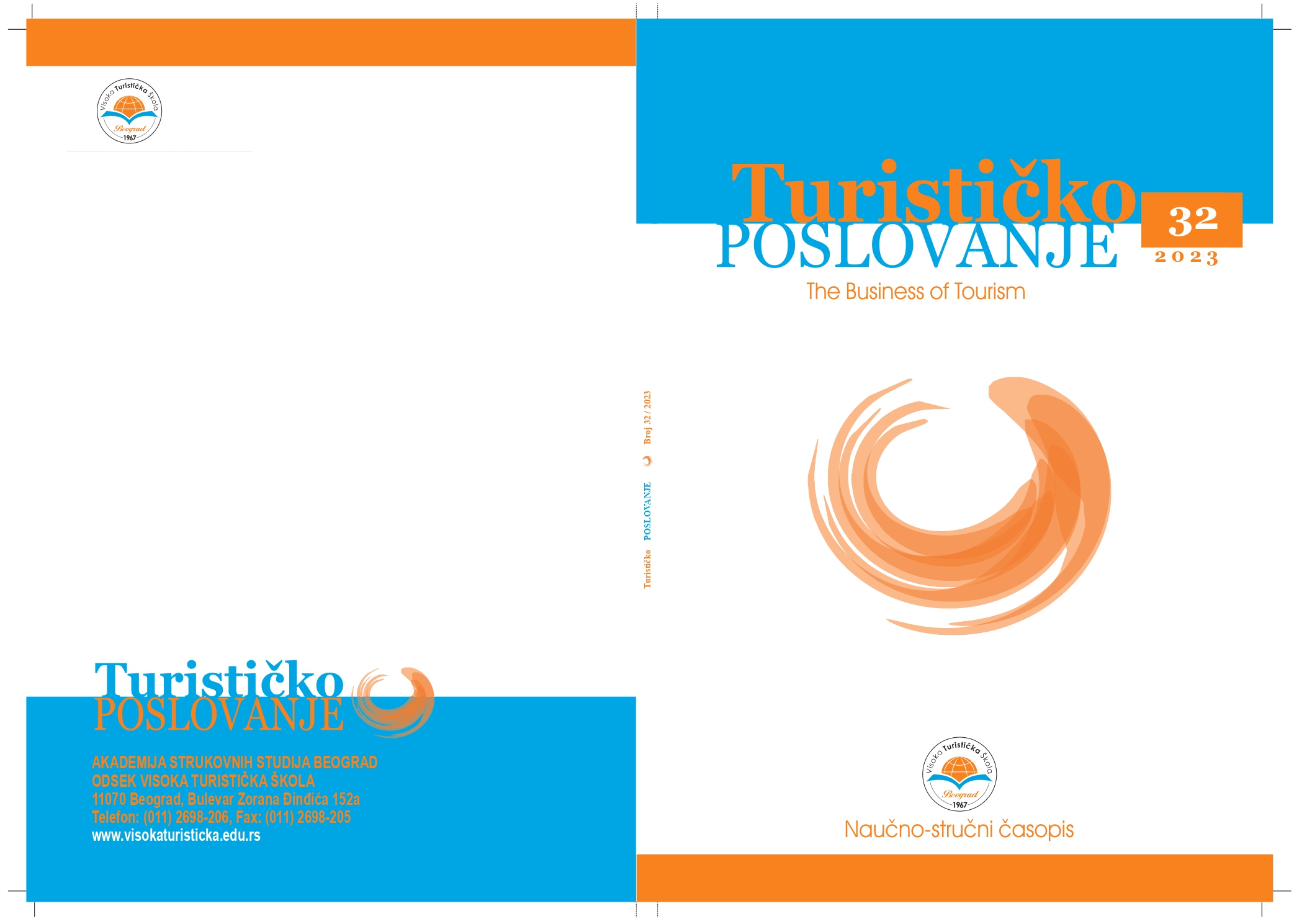TOURIST ATTRACTIONS WITH WILD ANIMALS- HIDDEN COST OF TOURIST ENTERTAINMENT
Abstract
Besides economic benefits, the development of tourism in a tourist destination should ensure ethical and humane treatment of animals. Wild animals are “tamed” so that they take part in a variety of activities such as: taking photos with tigers, elephant or camel riding, swimming with dolphins, circus performances with bears. However, behind the seemingly appealing activities, there is a hidden, back-stage aspect of the practice. Wild animals are removed from their natural habitat, tamed by various torture methods and exploited. Usually there is a negative impact on their health often resulting in their suffering with possibly fatal consequences. Governments of numerous countries have reacted to such practice with the aim to eradicate it, issuing recommendations either through legislation or through reports compiled by relevant institutions dedicated to the protection of animal rights. In addition, there is a reaction of business entities such as travel agencies, nature parks, hotels and other businesses which offer clear guidance and recommendations, contributing to the education about humane treatment of wild animals.
References
· Auster, R.E.; Barr, S.W.; Brazier, R.E. Wildlife tourism in reintroduction projects: Exploring social and economic benefits of beaver in local settings. Journal for Nature Conservation, Vol. 58, No 1, 2020
· Goodwin, H., McCombes, L., & Eckardt, C. (2009). Advances in travel philanthropy: Raising money through the travel and tourism industry for charitable purposes. WTM Responsible Tourism Day (Report Retrieved from www.icrtourism.org/documents/2_nov_wtm_tp_final_report.pdf
· Igor Rill, Eksploatacija, završna reč, National Geograghic, jun, 2019,
· Maathai, W. (2011). Challenge for Africa. Sustainability Science, 6(1), 1–2. https://doi.org/10.1007/s11625-010-0120-2
· National Geographic Srbija, jun 2019
· National Geographic Srbija, novembar 2019
· Reporting on the global scale of wildlife cruelty in the tourism industry for the first time, Oxford University’s Wildlife Conservation Research Unit (WildCRU), Head of Wildlife Research and Policy Neil D’Cruze, 21.10.2015
· UN WTO, International Tourism Highlights, 2019 Edition
· WORLD TRAVEL & TOURISM COUNCIL, The Economic impact of Global Wild Life Tourism, August 2019
· Zakon o turizmu, Službeni glasnik Republike Srbije, br.17/2019
Internet izvori:
· https://partner.booking.com/en-gb/click-magazine/industry-perspectives/our-commitment-protection-animals
· https://partner.booking.com/sr/pomoc/vodi%C4%8Di/dobrobit-%C5%BEivotinja
· https://wildwelfare.org/welfare-and-legislation/
· https://www.euronews.com/video/2023/09/11/german-circus-replaces-live-animals-with-holograms
· https://www.kantar.com/search#e=0&q=2019%20animals
· https://www.nationalgeographic.com/magazine/issue/june-2019
· https://www.nationalgeographic.com/travel/article/how-to-do-wildlife-tourism-right How to do wildlife tourism right, Guidelines for ethical animal encounters, may 15, 2019, Natasha Daly
· https://www.statista.com/statistics/1099933/travel-and-tourism-share-of-gdp/
· https://www.theguardian.com/us-news/2015/aug/06/seaworld-profits-plunge-customers
· https://www.unwto.org/asia/unwto-chimelong-why-wildlife
· https://www.worldanimalprotection.org.uk/cdn/ff/PY0JXBmyBc9fqGpHhIevnVXdgr0zQjtFatvWixDZJ08/1600791122/public/media/Tracking-the-travel-industry.pdf
· https://www.worldanimalprotection.org/
· IFAW, Saving whales in Iceland: The IFAW approach na: www.unwto.org/asia/unwto-chimelong-why-wildlife

